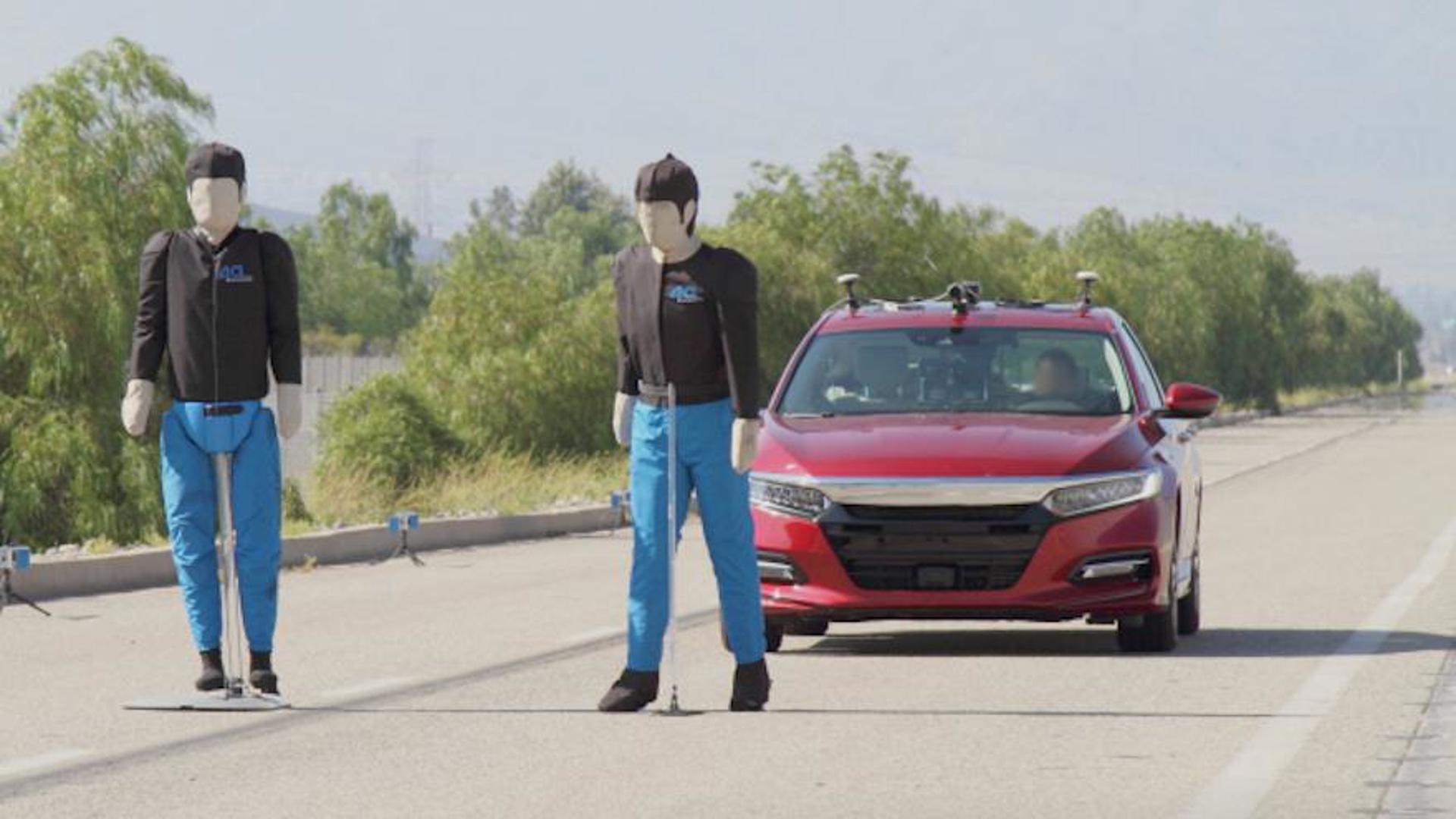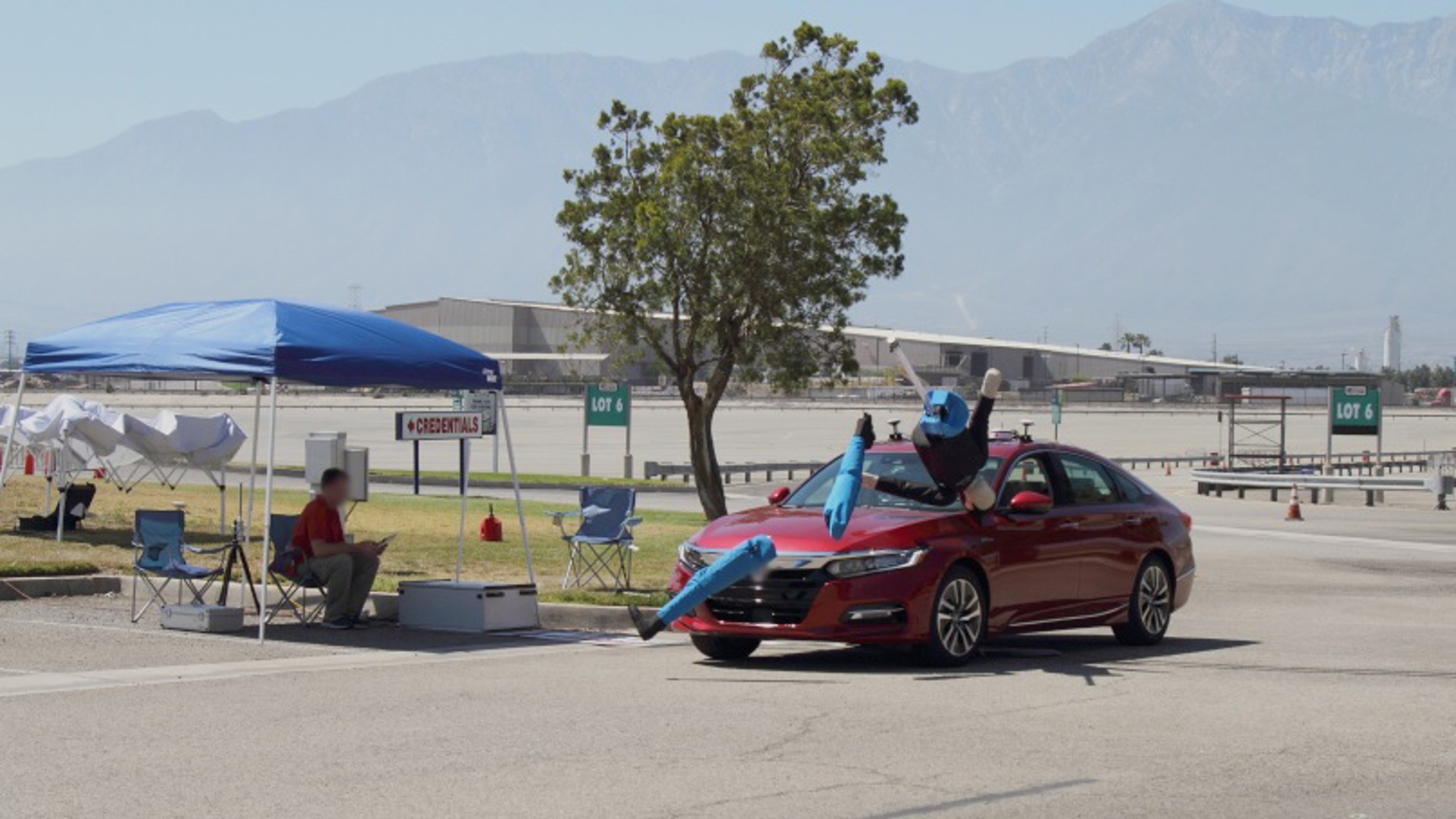The American Automobile Association (AAA) recently conducted a test of automatic emergency braking systems from four different major manufacturers and found the systems performed inconsistently in the daytime and even worse in low-light conditions.
In an interview with autoTRADER.ca, the Canadian Automobile Association (CAA), which is a sister organization to AAA, backed up the findings, with spokesperson Kristine D'Arbelles saying such safety systems "barely worked during the day and none of them worked at night."
For its test, AAA assembled four mid-sized sedans from four different automakers (2019 Chevrolet Malibu, 2019 Honda Accord, 2019 Tesla Model 3, and 2019 Toyota Camry) and put them on a test track with simulated pedestrians. The non-profit association found the systems were able to avoid a collision with the test dummy 40% of the time when the vehicle was travelling at 20 mph (32 km/h) and completely failed to avoid collisions at speeds of 30 mph (48 km/h).
Additionally, AAA found that:
- When encountering a child darting from between two cars, with the vehicle travelling at 20 mph, a collision occurred 89% of the time.
- When making a right hand turn, all of the test vehicles collided with the adult pedestrian dummy.
- When approaching two adults standing alongside the road at 20 mph, a collision occurred 80% of the time.
- At night, none of the systems detected or reacted to the adult pedestrian.
According to CAA data, 299 pedestrians were fatally struck by motor vehicles in Canada in 2017, which is the most recent year the organization has data for. Of those, 170, or 56%, occurred between the hours of 5 p.m. and 5 a.m., making the ineffectiveness of automatic emergency braking systems in low-light conditions particularly concerning.
We reached out to Subaru Canada to comment on the study, whose EyeSight semi-autonomous safety system has been singled out by the American Insurance Institute for Highway Safety (IIHS) as being one of the more effective examples of such technology. Subaru said it could not confirm if the results from its internal testing matched that of AAA's data, as the effectiveness of automatic emergency braking systems are largely dependent on the colour of a person's clothing and the current weather conditions. For what it's worth, Subaru said it tuned EyeSight for the Canadian market before launching it here, adjusting it for Canada's unique lane markings and testing it in winter weather conditions.
But CAA is concerned that technologies like EyeSight, which uses cameras to support a variety of semi-autonomous safety nets, are misleading drivers. D'Arbelles said its great to have safety technology to assist drivers, but that "the key word is assist." Some motorists may think they can fully rely on these systems to save them from a collision with a pedestrian or another vehicle, but as the AAA study shows, that is far from the truth.
In response, CAA is working on a driver education campaign that aims to make Canadian motorists aware of the limitations of semi-autonomous safety technology. Set to be released in November, the CAA campaign will educate motorists on what systems like automatic emergency braking, along with other similar technology like forward collision avoidance and lane keep assist, are and are not capable of.
"Understanding there is a limitation and knowing the limitation is very important," D'Arbelles said.
You can read AAA's findings from its automatic emergency braking study in their entirety at this link, and if you have a car with such technology, we highly encourage you to do so.


